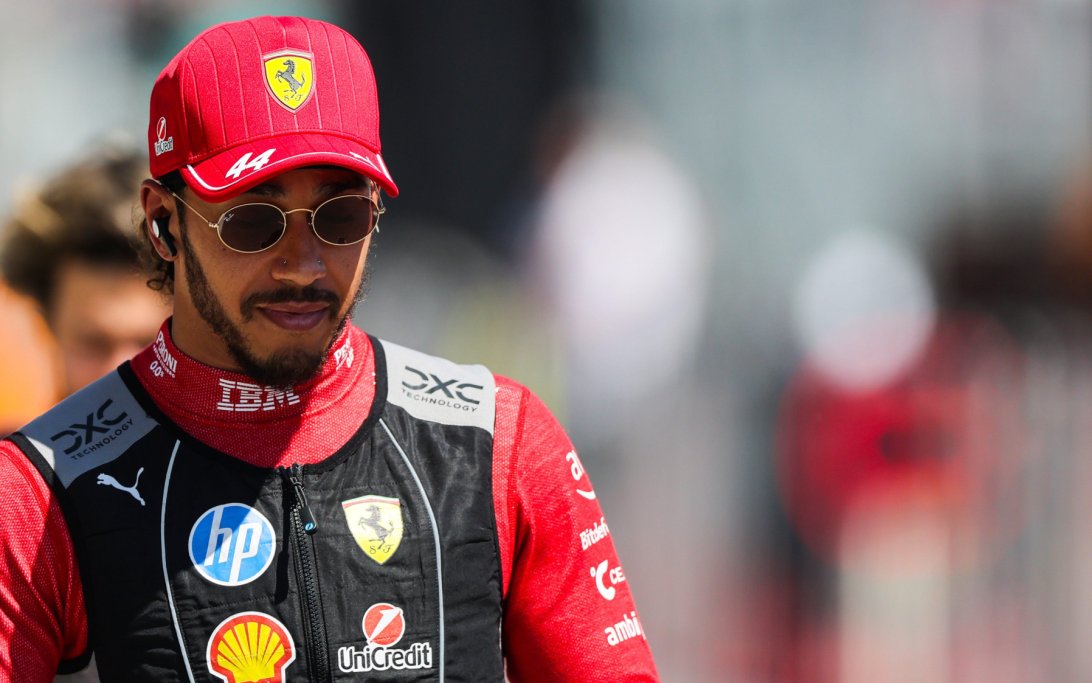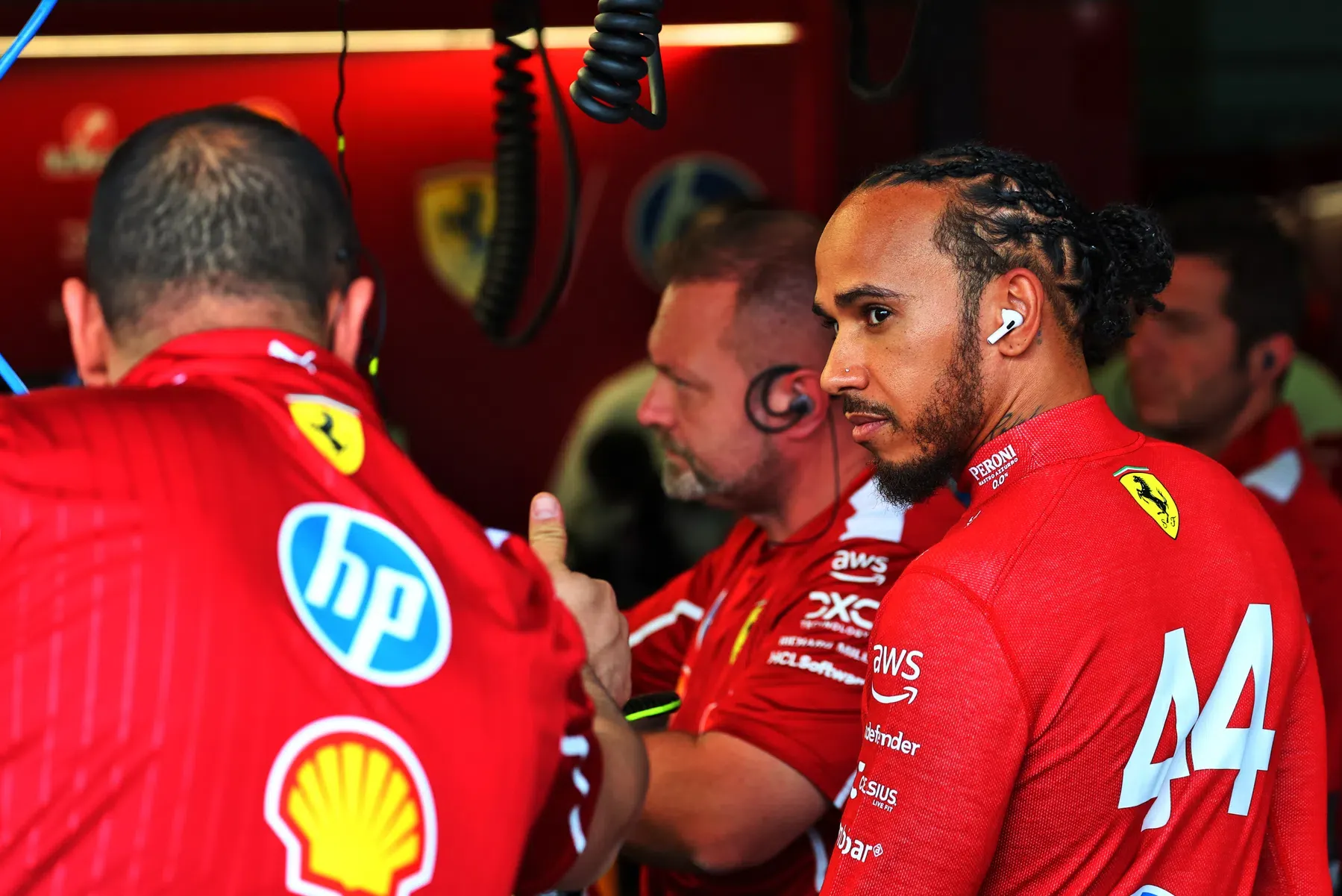In the high-speed theatre of Formula 1, upgrades are routine—press releases are crafted, CAD renderings leaked, and drivers deliver the usual feedback: “a step forward,” “more driveable,” or “we’ll need to analyze the data.”
But sometimes, what appears to be an incremental tweak is actually something far deeper. At the 2025 Austrian Grand Prix, Ferrari didn’t just bring a new floor to the SF-25. They brought a confession.
Not with words, of course. That’s not how Formula 1 works. In this sport, admissions of fault are buried in design language, masked behind aero maps, and whispered between telemetry curves.
Yet to those who understand the dialect of downforce and the unspoken messages behind a floor change mid-season, the truth was unmistakable: Ferrari’s upgrade is not a refinement—it’s a reckoning.

A Car in Crisis
From the moment the SF-25 turned its first laps in Melbourne, something was off. On paper, the numbers suggested promise. But the reality was far less convincing. Low-speed corners exposed a skittishness that defied logic. Medium-speed transitions were met with rear-end unpredictability, while ride height compromises strangled the car’s aerodynamic window. The car didn’t just underperform—it unsettled.
Now, deep into the Styrian hills, Ferrari has dropped the facade. The floor isn’t a tweak—it’s a philosophical shift, a systemic reset driven by desperation rather than strategy. After 11 rounds without a win, the team has been forced to confront an ugly truth: their car isn’t underperforming—it’s fundamentally broken.
A Floor That Speaks Volumes
At first glance, the new floor doesn’t scream revolution. No outrageous winglets, no exaggerated geometric deviations. But the silence is the message. Ferrari’s aerodynamicists have quietly targeted two chronic weaknesses: aeromechanical instability and platform unpredictability. The reshaped edge profiles, adjusted venturi tunnels, and reinforced channels are designed not to maximize downforce, but to make the car behave—consistently, predictably, across a range of conditions.
The old floor bled performance the moment the chassis deviated from its ideal ride height. To prevent this, Ferrari had to run a higher ride height, compromising downforce and making tire management a nightmare. The new floor is a bandage for that wound—but one applied with surgical precision. And it wasn’t driven by simulation—it was pushed forward by driver feedback, most notably from Lewis Hamilton.
Hamilton’s Unfiltered Frustration
Publicly, Hamilton has remained polished and pragmatic. But internally, his patience has been wearing thin. The flashpoint came in Montreal, where a brutal lockup almost sent him into the wall. The floor he’d been criticizing behind closed doors finally betrayed him on global television.
Insiders reveal it was Hamilton’s debrief after Imola that finally shook Ferrari leadership awake. His complaints weren’t about setup. They were about conceptual architecture—the way the car translated load, the way it responded to throttle and brake inputs. His demand wasn’t for more grip. It was for trust in the machine underneath him.
And that demand has now shaped Ferrari’s response. Engineers Diego Tandi and Loïc Serra didn’t just adjust stiffness values or reprofile airflow—they rebuilt the platform’s philosophy. The new design doesn’t chase theoretical peak performance. It chases driver confidence. That’s the most honest thing Ferrari has done all year.

A Team on the Edge
Hamilton isn’t alone in his disillusionment. Charles Leclerc, the golden boy of Maranello, made the rare choice to surrender FP1 in Austria to rookie Dano Bejovic. On paper, it was framed as mentorship. In truth, it was a sign of psychological fatigue. A subtle withdrawal from a car he no longer believes can deliver.
This isn’t just about two drivers. It’s about a team on the brink. The Constructors’ standings show Ferrari slipping from contender to chaser. Red Bull, even when wounded, remains a metronome of consistency. McLaren has surged. Mercedes is resurging. Aston Martin lurks. Ferrari? Ferrari is running out of excuses—and time.
Internal Fractures, External Pressure
Perhaps more worrying than lap times are the internal dynamics. Sources inside Maranello speak of division—technical departments working in isolation, not out of secrecy, but out of necessity. Tandi and Serra reportedly pushed for this new floor for months, only to meet resistance rooted in Ferrari’s historic stubbornness: a clinging to mechanical grip philosophies in an age defined by aerodynamic evolution.
Fred Vasseur, the man tasked with leading this resurrection, is reportedly fighting to unify two diverging schools of thought. One believes in Red Bull’s path: radical underfloor aerodynamics and risk-heavy concepts. The other clings to Ferrari’s traditional approach: balance, mechanical predictability, legacy.
Austria, then, is more than just a race. It’s a referendum. And Ferrari’s vote isn’t cast in words—it’s cast in carbon.
A Ticking Clock
Silverstone follows just one week after Spielberg. That’s not just another round—it’s the first major checkpoint for 2026 car development. Every race between now and then carries disproportionate weight. Ferrari’s upgrade isn’t just trying to save 2025. It’s trying to avoid ruining 2026.
If the floor works, it buys Ferrari something rare and fragile in F1: belief. Not just among drivers, but across the organization. Belief that this path is salvageable. Belief that the SF-25 isn’t beyond redemption. Belief that Ferrari, the team of legends and legacy, still knows how to win.
But if it fails? Then the car’s concept is unsalvageable. And that changes everything—from chassis plans to driver contracts to team structure. For Hamilton, it could mean questioning the very reason he left Mercedes. For Leclerc, it could trigger the kind of soul-searching that often leads to exits. For Ferrari? It’s an existential risk.
The Battle Beneath the Surface
As the lights go out in Austria, the real battle won’t just be on the stopwatch. It’ll play out in the pauses between team radio replies, in the tight smiles in post-session interviews, and in the quiet meetings that happen long after the cameras are gone.
Ferrari is fighting not for a podium, but for relevance. For faith. For identity. Because in modern Formula 1, once a team loses belief in itself, the fall is quick—and often unrecoverable.
Austria, then, isn’t just another Grand Prix. It’s a crucible. And what survives the heat will determine whether Ferrari’s future is one of renaissance—or ruin.
Full Video:





